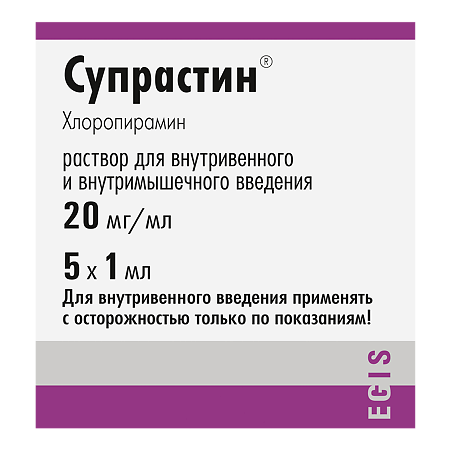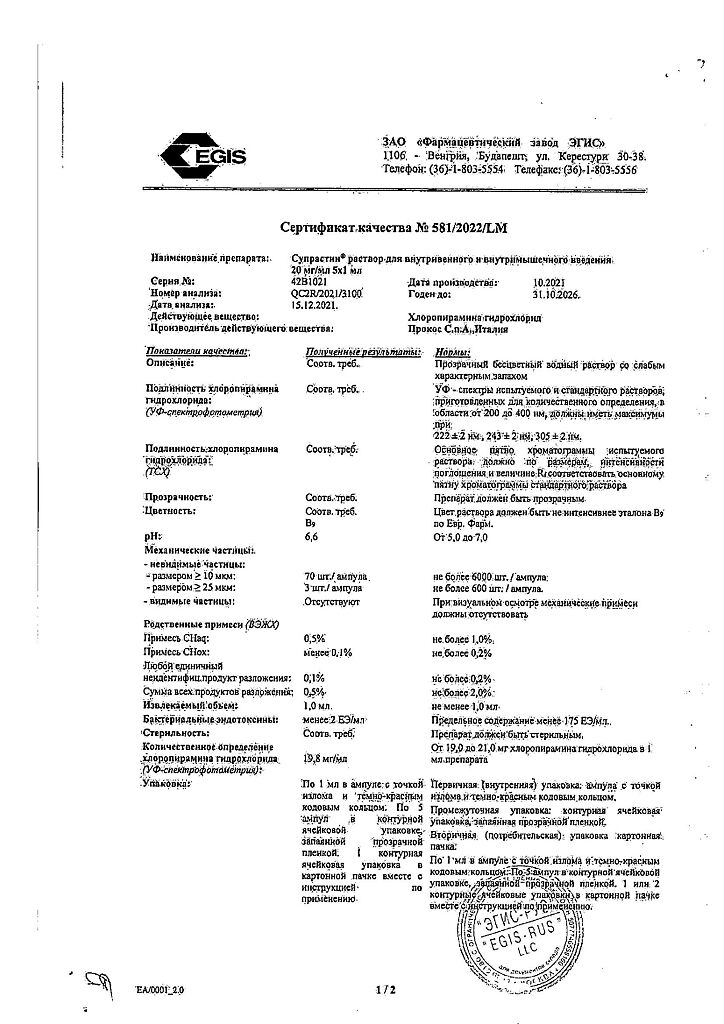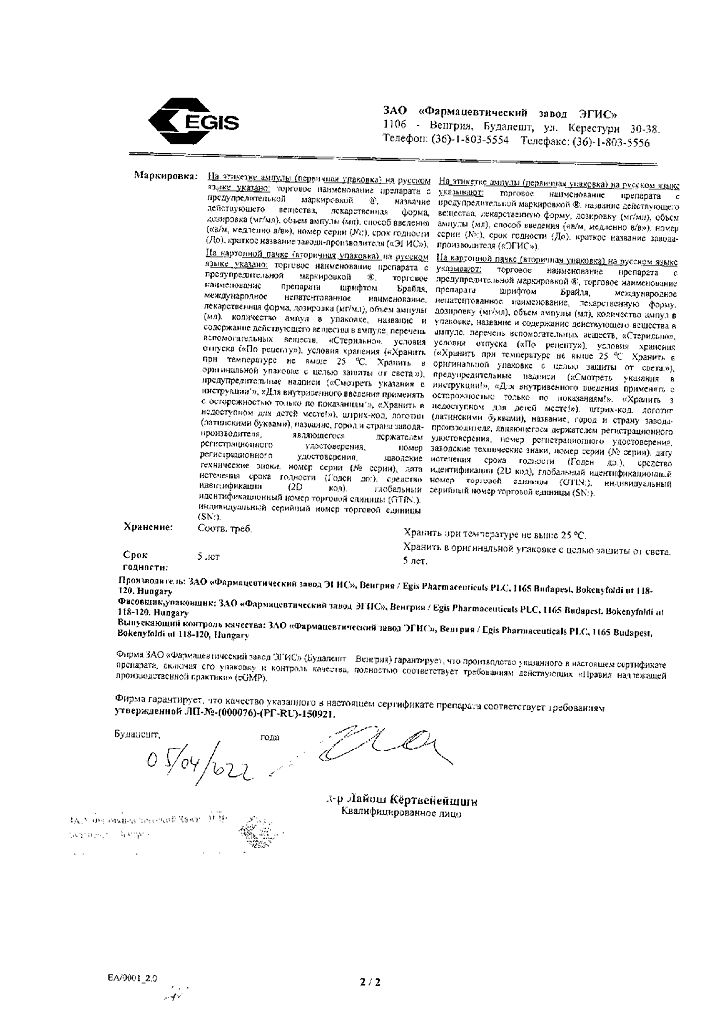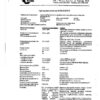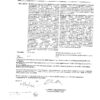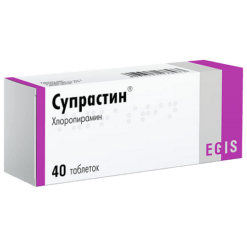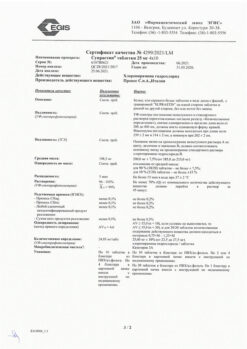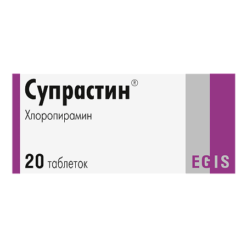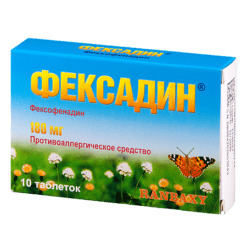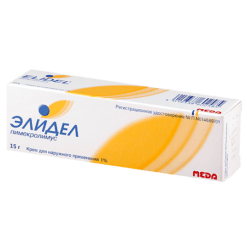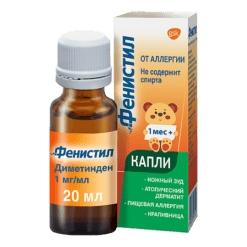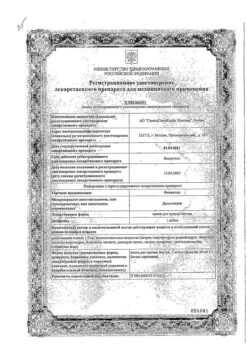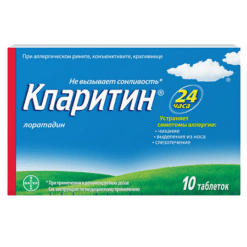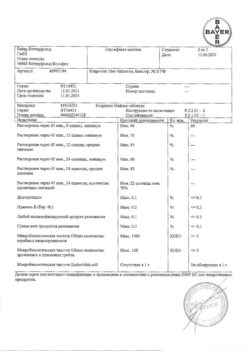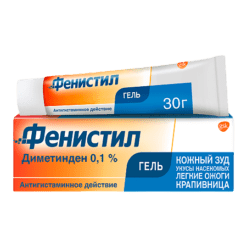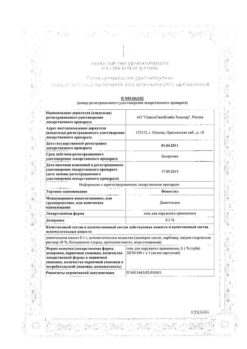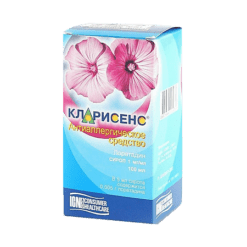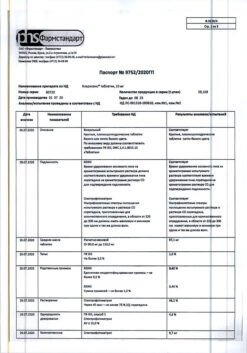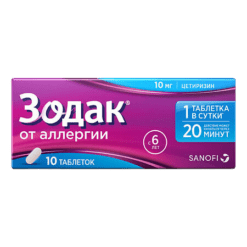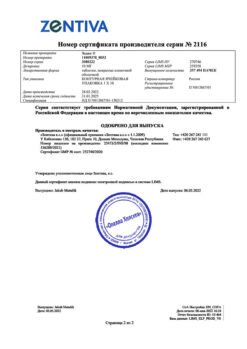No products in the cart.
Description
Anti-allergic drug. Blocker of histamine H1-receptors.
Chloropyramine hydrochloride, a chlorinated analog of tripelenamine (pyribenzamine), is a classic antihistamine drug belonging to the group of ethylenediamine antihistamines.
It has antihistamine and m-cholinoblocking effects, has antiemetic effect, moderate antispasmodic and peripheral cholinoblocking activity.
The therapeutic effect of chlorpyramine develops within 15-30 minutes after oral administration, reaches a maximum within the first hour after administration and lasts for at least 3-6 hours.
Indications
Indications
Urticaria, angioedema (Quincke’s edema), serum sickness, seasonal and year-round allergic rhinitis, allergic conjunctivitis, contact dermatitis, skin itching, acute and chronic eczema, atopic dermatitis, food and drug allergies, allergic reactions to insect bites.
Pharmacological effect
Pharmacological effect
Antiallergic drug. Histamine H1 receptor blocker.
Chloropyramine hydrochloride, a chlorinated analogue of tripelenamine (pyribenzamine), is a classic antihistamine that belongs to the group of ethylenediamine antihistamines.
It has an antihistamine and m-anticholinergic effect, has an antiemetic effect, moderate antispasmodic and peripheral anticholinergic activity.
The therapeutic effect of chloropyramine develops within 15-30 minutes after oral administration, reaches a maximum within the first hour after administration and lasts at least 3-6 hours.
Special instructions
Special instructions
When combined with ototoxic drugs, Suprastin® can mask early signs of ototoxicity.
Diseases of the liver and kidneys may require a change (reduction) in the dose of the drug, and therefore the patient should inform the doctor about the presence of liver or kidney disease.
Taking the drug at night may increase the symptoms of reflux esophagitis.
Suprastin® can enhance the effect of ethanol on the central nervous system, and therefore, while taking the drug Suprastin®, you should avoid drinking alcoholic beverages.
Long-term use of antihistamines can lead to disorders of the hematopoietic system (leukopenia, agranulocytosis, thrombocytopenia, hemolytic anemia). If during long-term use there is an unexplained increase in body temperature, laryngitis, pallor of the skin, jaundice, the formation of ulcers in the mouth, the appearance of hematomas, unusual and long-lasting bleeding, it is necessary to conduct a clinical blood test to determine the number of formed elements. If the test results indicate a change in the blood formula, stop taking the drug.
Impact on the ability to drive vehicles and operate machinery
The drug, especially in the initial period of treatment, may cause drowsiness, fatigue and dizziness. Therefore, in the initial period, the duration of which is determined individually, driving vehicles or performing work associated with an increased risk of accidents is prohibited. After this, the degree of restriction on driving vehicles and operating machinery must be determined by the doctor individually for each patient.
Active ingredient
Active ingredient
Chloropyramine
Composition
Composition
1 ampoule contains chloropyramine hydrochloride 20 mg.
Excipients:
water for d/i – up to 1 ml.
Pregnancy
Pregnancy
There have been no adequate and well-controlled studies of the use of antihistamines during pregnancy. Therefore, the use of the drug in pregnant women (especially in the first trimester and the last month of pregnancy) is possible only if the potential benefit to the mother outweighs the possible risk to the fetus.
If it is necessary to use the drug during lactation, breastfeeding should be suspended.
Contraindications
Contraindications
Hypersensitivity to chloropyramine and other components of the drug,
acute attack of bronchial asthma,
children under 1 month of age (term and premature),
pregnancy,
breastfeeding period.
With caution:
Angle-closure glaucoma, urinary retention, prostatic hyperplasia, liver and/or kidney dysfunction, cardiovascular diseases, elderly patients.
Side Effects
Side Effects
Side effects occur, as a rule, extremely rarely, are temporary and disappear after discontinuation of the drug.
From the hematopoietic system: very rarely – leukopenia, agranulocytosis, hemolytic anemia and other changes in the cellular composition of the blood.
From the side of the central nervous system: drowsiness, fatigue, dizziness, nervous agitation, tremor, headache, euphoria, convulsions, encephalopathy.
From the organ of vision: blurred vision, glaucoma, increased intraocular pressure.
From the cardiovascular system: decreased blood pressure, tachycardia, arrhythmia (a direct connection of these side effects with taking the drug has not always been established).
From the digestive system: abdominal discomfort, dry mouth, nausea, vomiting, diarrhea, constipation, loss or increase of appetite, epigastric pain.
From the urinary system: difficulty urinating, urinary retention.
From the musculoskeletal system: muscle weakness.
Other: photosensitivity, allergic reactions.
If any of the above effects occur, the patient should stop taking the drug and consult a doctor immediately.
Interaction
Interaction
The drug enhances the effect of barbiturates, M-anticholinergics, and opioid analgesics.
MAO inhibitors can enhance and prolong the anticholinergic effect of chloropyramine.
When combined with ototoxic drugs, Suprastin® may mask signs of ototoxicity.
Antihistamines can distort the results of skin allergy tests, so a few days before the planned test, taking drugs from this group should be stopped.
Overdose
Overdose
Symptoms: hallucinations, anxiety, ataxia, incoordination, athetosis, convulsions; in young children – agitation, anxiety, dry mouth, fixed dilated pupils, facial flushing, sinus tachycardia, urinary retention, fever, coma; in adults, fever and facial redness are observed intermittently, after a period of excitement followed by convulsions and post-convulsant depression, coma.
Treatment: up to 12 hours after taking the drug – gastric lavage (it should be taken into account that gastric emptying is prevented by the anticholinergic effect of the drug), administration of activated charcoal, monitoring of blood pressure and breathing parameters, symptomatic therapy, and, if necessary, resuscitation measures. A specific antidote is unknown.
Storage conditions
Storage conditions
Store at room temperature (not higher than 25°C).
Shelf life
Shelf life
5 years.
Do not use after expiration date.
Manufacturer
Manufacturer
EGIS, Hungary
Additional information
| Shelf life | 5 years. Do not use after the expiration date. |
|---|---|
| Conditions of storage | Store at room temperature (not exceeding 25°C). |
| Manufacturer | EGIS, Hungary |
| Medication form | solution |
| Brand | EGIS |
Other forms…
Related products
Buy Suprastin, 20 mg/ml 1 ml 5 pcs with delivery to USA, UK, Europe and over 120 other countries.

